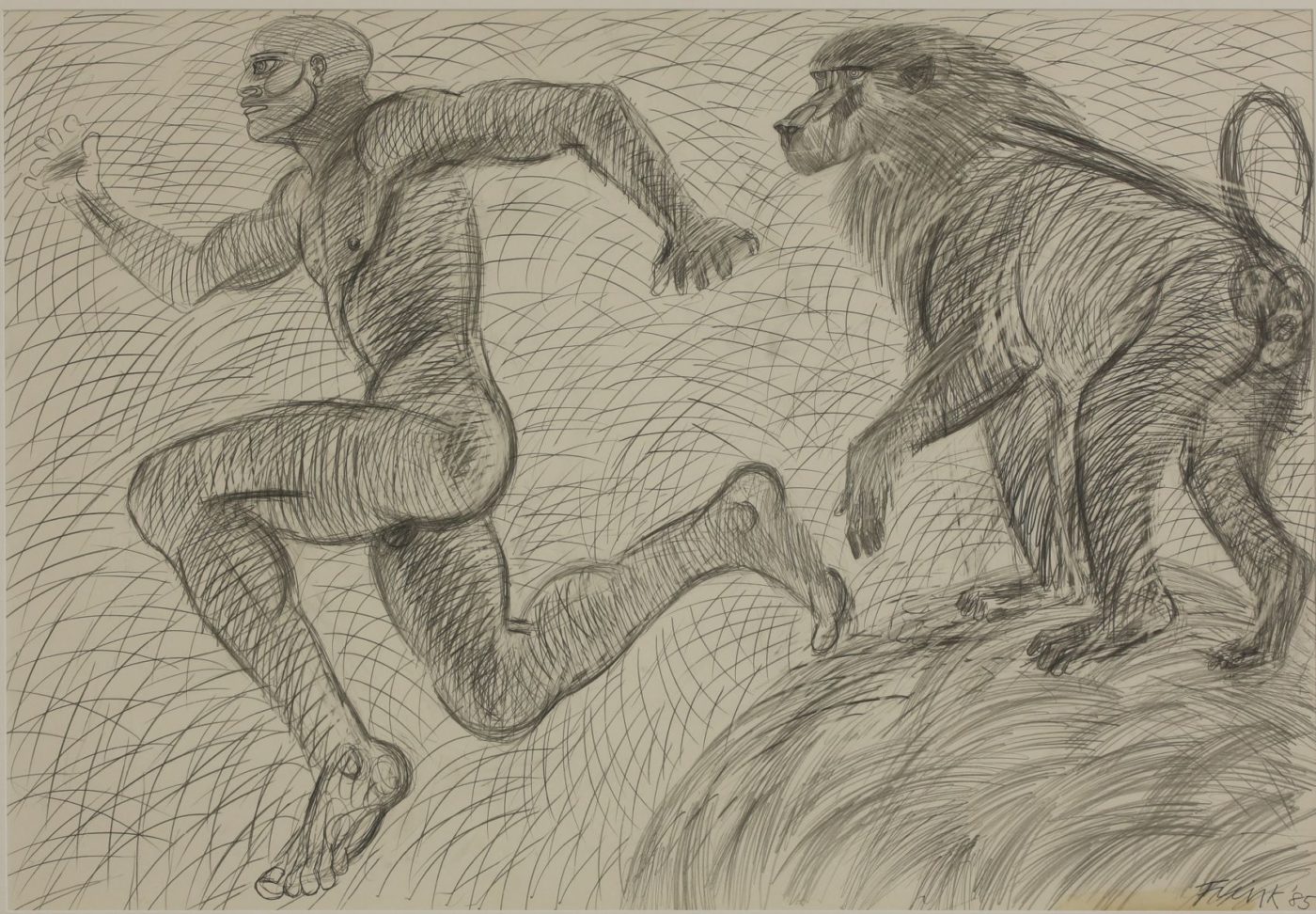Sculptor, draughtsman and teacher. She studied at Guildford School of Art, 1949-53, under Willi Soukop and Bernard Meadows. She taught at Chelsea School of Art from 1951-61, St Martin’s School of Art, 1954-62, and at the Royal College of Art from 1965-67. After early exhibiting with the London Group, Frink had a one-man show at St George’s Gallery in 1955 and four years later at Bertha Schaefer Gallery, New York. Over the years she established herself as a sculptor concerned with themes, such as goggle men, running men and horses with and without riders. She also worked on many major public commissions, such as Wild Board for Harlow New Town; Blind Beggar and Dog at Bethnal Green and a noble horse and rider on Piccadilly.
Dame Elisabeth Frink, CH RA (1930-1993), Man and Baboon, 1985

£ click for price and more information
Signed and dated
Graphite and wash on paper
27 ½ x 39 in (70 x 99 cm)
This magnificent drawing combines two of the artist’s favourite motifs, The Running Man and a Baboon : similar drawings, also done in 1985, are reproduced in Edward Lucie Smith Elisabeth Frink ,Sculpture and Drawings since 1984 p.148-149 and in Elizabeth Frink, Humans and other Animals, Sainsbury Centre, University of East Anglia 2018, p.138.
Edward Lucie-Smith writes that in ‘’The mid 1980’s Frink’s drawings began to change in a radical way. They become more pictorial, and at the same time bolder, much less concerned with suavity or elegance. An early instance of this shift in style is Man and Baboon. Frink here brings together two images seen previously in her work, combined to make a narrative. The man, a new version of her runners, flees from the presence of the animal which contemplates him somewhat sardonically. In this drawing Frink may have meant to symbolise the defeat of the supposedly ‘civilised’ by purely instinctive and natural values….the pencil strokes are notably bold and vigorous; the whole sheet even the background area ,is covered with rhythmic hatchings, which helps to knit the centrifugal composition together’’.